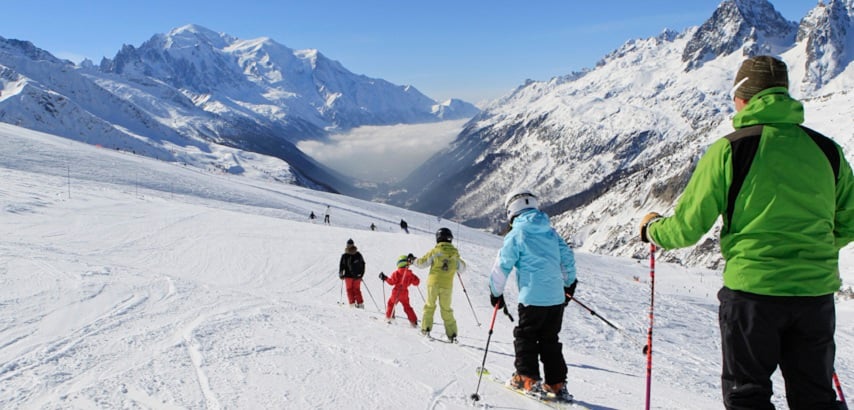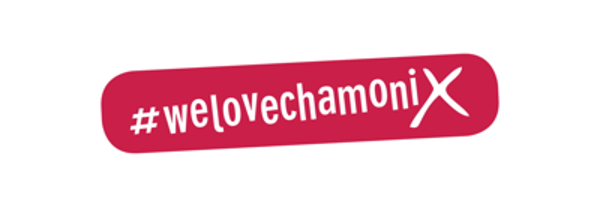Winter in Chamonix is iconic – the dramatic Mont Blanc mountains create the perfect backdrop for some of the best winter adventures in the world. Most visitors come for a ski holiday in Chamonix, thanks to the variety of slopes, reliable snow, and the resort’s convenient proximity to Geneva Airport. With multiple ski areas to explore and a huge choice of winter activities beyond skiing, Chamonix attracts families, couples, and groups of friends year after year. In this Chamonix winter guide, we’ll show you why you can’t miss experiencing winter in Chamonix. (Looking for summer inspiration? Don’t miss part one of our seasonal guide!)
Why Visit Chamonix in Winter?
Skiing may be the highlight of winter in Chamonix for most visitors, but the resort offers so much more than just world-class pistes. Couples can enjoy cosy, romantic restaurants, families can introduce their children to skiing on the nursery slopes, and groups with mixed interests will find a wide choice of activities to keep everyone entertained.
If skiing isn’t your thing but you still want to stay active, there are plenty of winter activities in Chamonix beyond skiing. Test your skills at the indoor climbing wall or bouldering room, or head to the Parc de Loisirs at Les Planards to try the Alpine Coaster – a thrilling ride for all ages. For an adrenaline rush, paragliding and panoramic helicopter flights give you unforgettable views of Mont Blanc, while snowshoeing, ice climbing, or cross country skiing keep the snow-based fun alive.
For a slower pace, why not combine your ski trip with a little relaxation? Spend an afternoon at QC Terme Chamonix, where hot pools, saunas, and Mont Blanc views make it a destination in its own right. Culture lovers can explore the Crystal Museum (Espace Tairraz), showcasing glittering gems and the region’s geological history.
If you fancy a change of scene, Chamonix is perfectly placed for day skiing in neighbouring resorts. From Courmayeur in Italy—just a quick trip through the Mont Blanc tunnel—to French favourites like Megève, Saint-Gervais, and Les Contamines, options are plentiful. Over in Switzerland, Crans-Montana offers wide-open pistes and sunshine. With these easy day trips, you can add variety to your holiday while still enjoying Chamonix as your base. For a less ‘extreme’ day out, you can taste local beers, wines and cheeses, or visit the beautiful and historic cities of Annecy, Geneva, or Milan.
If winter is all about skiing for you, January brings quiet slopes and crisp snow. Prefer warmer days? Spring skiing delivers soft, sun-warmed snow. Need help choosing the best time of year? Check out our guide.
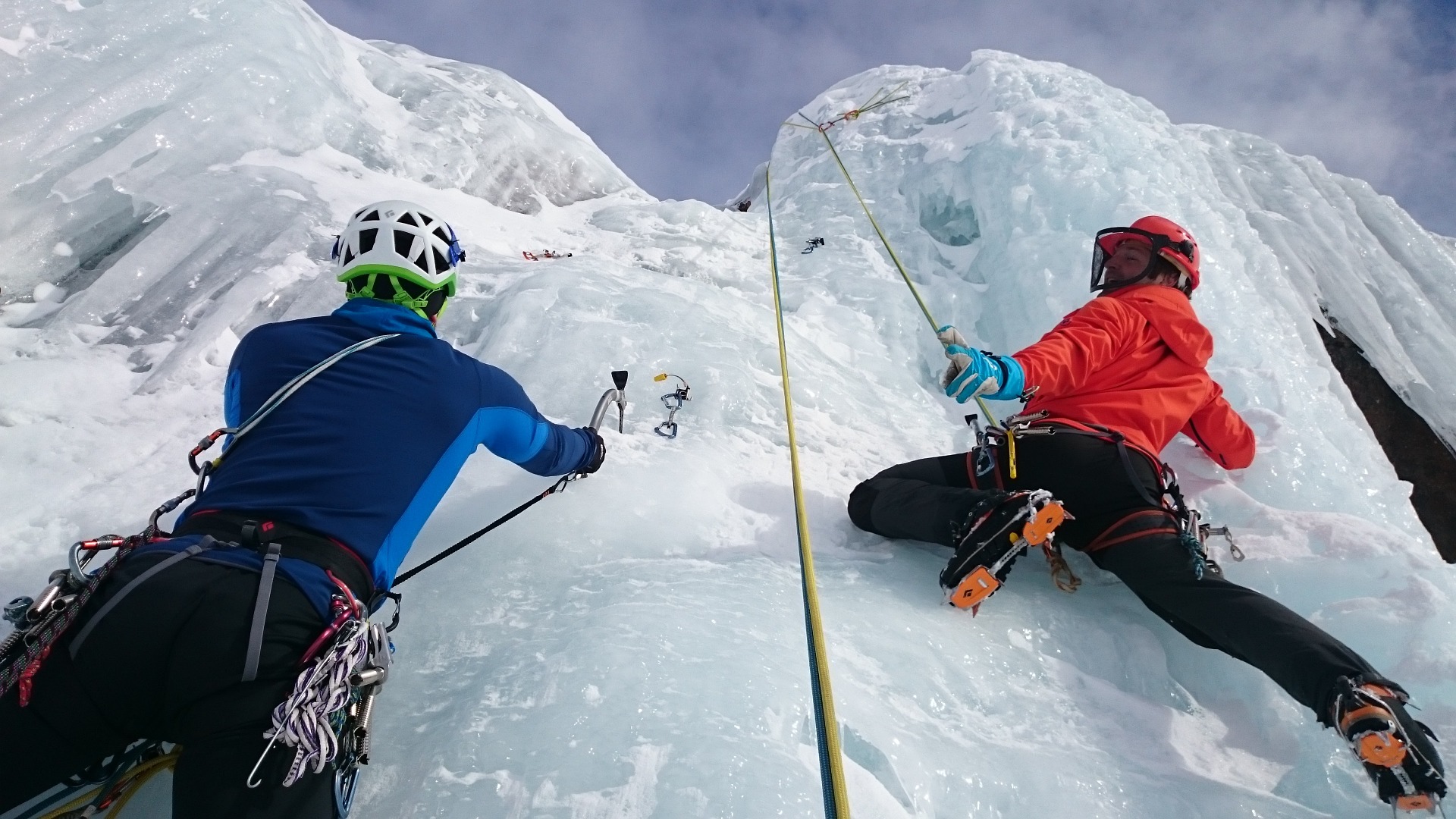
Winter Misconceptions
Chamonix is expensive
It’s true that Chamonix has a reputation as a premium ski destination, but that doesn’t mean it’s out of reach. Like any mountain resort, costs can vary depending on how you plan your trip. Eating and drinking out is often comparable to major cities like London or Paris, but there are plenty of ways to keep a holiday in Chamonix affordable. Self-catered apartments and chalets give you the flexibility to cook at home, supermarkets are well stocked, and there are casual dining spots alongside fine-dining restaurants. Lift passes and activities also come in different options, so whether you’re travelling on a budget or looking to splash out, you can tailor your stay to suit your group.
You’ll be eating cheese all week
Of course, no trip to Chamonix is complete without trying classic Savoyard dishes like fondue and raclette — but it’s not all melted cheese! The Chamonix restaurant scene in 2025 is more diverse than ever, offering flavours from around the world. You’ll find authentic Mexican, fresh sushi bars, gourmet pizzerias, and plenty of international favourites alongside traditional French bistros. Add in Michelin-starred fine dining and plenty of international options, and it’s clear that Chamonix offers much more than the traditional Savoyard specialities.
The skiing is only for advanced or extreme skiers
Yes, Chamonix has legendary back-country terrain that attracts the best skiers in the world, but that’s only part of the story. Every ski area now has dedicated beginner and learner zones, alongside the nursery slopes on the valley floor, making it a great place to take your first turns. With pistes ranging from gentle greens to the World Cup Kandahar black run, there’s something for every level, whether it’s your first day on skis or your hundredth. And if you’re curious about venturing off-piste, there are excellent introductory freeride and safety courses available to help you start exploring the mountains with confidence.
Local transport is poor
One of the biggest misconceptions is that Chamonix is difficult to get around. Unlike purpose-built resorts, Chamonix is not ski-in ski-out — the ski areas are spread along the valley. But that doesn’t mean you’ll be stuck without a car.
The resort has invested heavily in improving its public transport network, with regular valley buses, the Mont Blanc Express train, and the handy town-centre shuttle Le Mulet. Most services are now electric or hybrid, and while buses aren’t free, your Guest Card (provided by us) gives you discounted fares. Night buses make it simple to get back after dinner or après-ski.
For up-to-date timetables and routes, see the official pages for public transport in Chamonix, the Mont Blanc Express train, and the Chamonix bus network.
In short: you won’t ski to your door in Chamonix, but you will get everywhere you want to go — easily and sustainably.
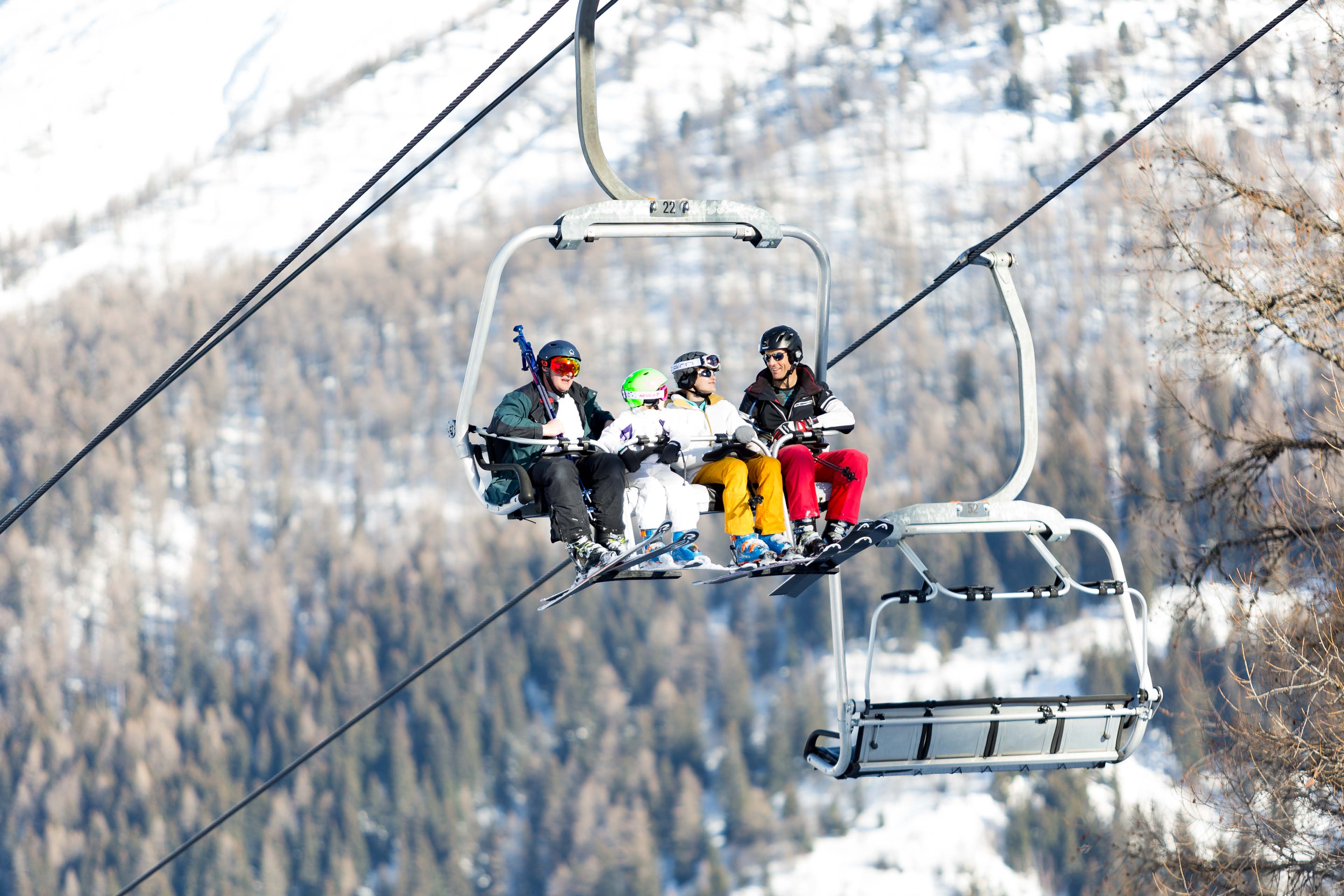
Chamonix’s Ski Areas
Chamonix offers a wealth of skiing spread along the length of the valley, from Le Tour at the head of the valley to Les Houches at the other end, passing by Brévent-Flégère and Les Grands Montets. With such variety of ski areas, there’s something for every level, whether you’re taking your first turns or chasing steep descents.
Relaxed skiing, perfect for building confidence: Les Houches. Known for its tree-lined runs and the legendary Kandahar World Cup piste, Les Houches is a great choice for mixed-ability groups. Beginners and intermediates can build confidence on gentler slopes, while experienced skiers can test themselves on steeper terrain. The views of the Mont Blanc Massif make this area a favourite for photos and family days out.
At the top of the valley lies Le Tour. Le Tour is perfect for beginners and early intermediates, with wide, gentle runs and the Vormaine nursery slope at the base. Take the Mont Blanc Express train to Vallorcine and ride the gondola up to access the ski area — a quieter alternative to the bus. Le Tour also offers sweeping blues that are ideal for cruising and soaking in the scenery.
Brévent and Flégère are two interlinked ski areas with great skiing, especially popular with intermediates and advanced skiers. You’ll find a mix of reds, blues, and some challenging blacks, all with unbeatable views across to Mont Blanc. The Planpraz gondola is just a short walk from the centre of Chamonix, making it one of the most convenient access points in the valley.
- Insider’s tip: Avoid the buses or the walk which is up a steep hill and take the drag lift on the Savoy nursery slope that is located behind the Folie Douce, when you get to the top, turn around and ski the first 100m following signs to the gondola.
Les Grands Montets is world famous for its steep and challenging piste and off-piste skiing. Grands Montets has been operating without its top cable car since the 2018 fire. A new lift is under construction, with reopening planned for 2026, but in the meantime there’s still plenty to enjoy: varied pistes, off-piste routes, and a beginner zone at the base in Argentière. Powder lovers should arrive early — this is where you’ll find some of the best snow in the valley.
Vallée Blanche – No trip to Chamonix is complete without mentioning this legendary 20km off-piste descent. Starting from the Aiguille du Midi at 3,842m, it’s an unforgettable high-mountain journey winding through glaciers and towering peaks before finishing back in the valley. A mountain guide is strongly recommended to enjoy it safely, but for many, skiing the Vallée Blanche is the highlight of their Chamonix winter.
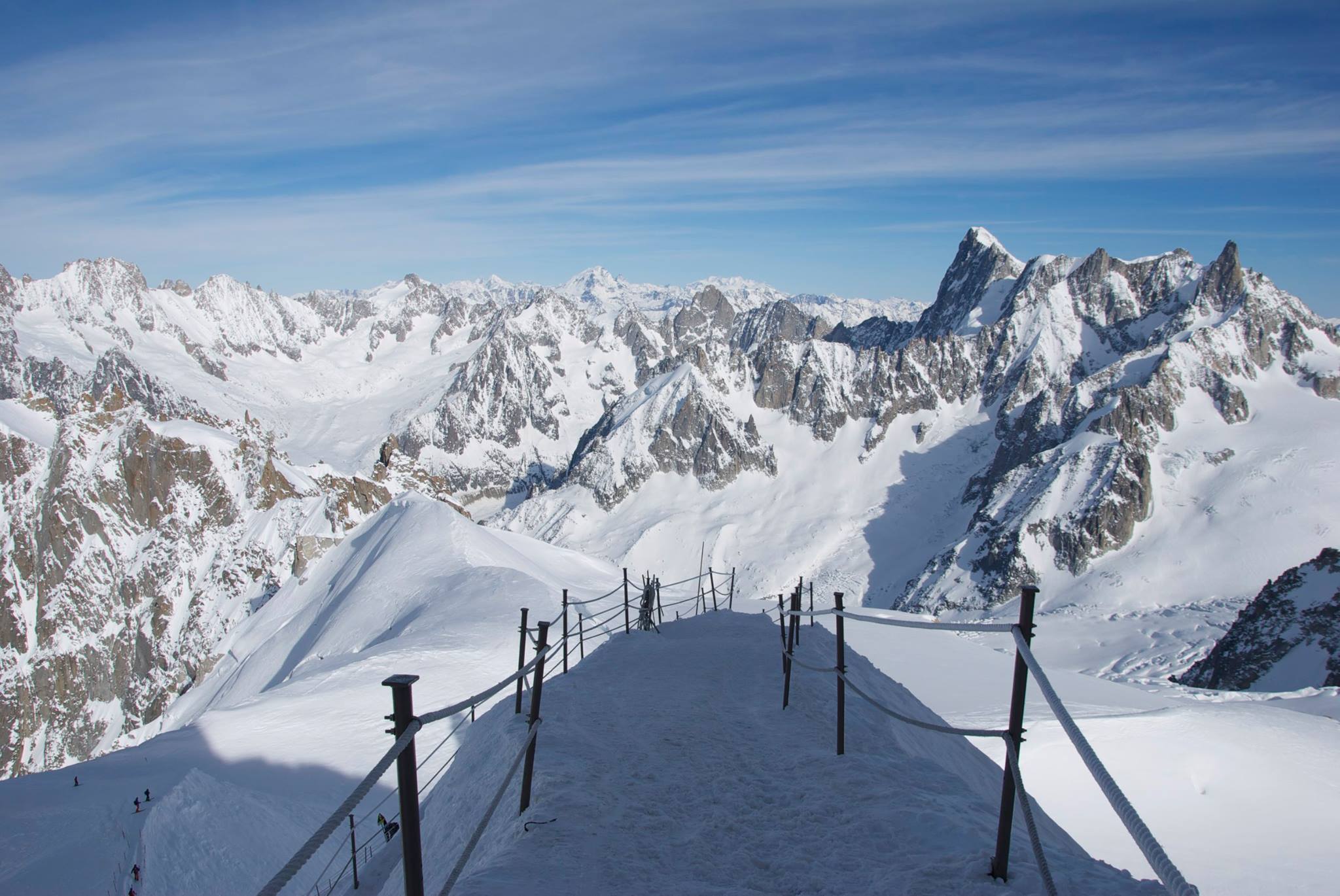
Ready for more? Move on to the third post in the series, Travel to Chamonix, or jump ahead to discover what to expect from Chamonix holiday accommodation.

